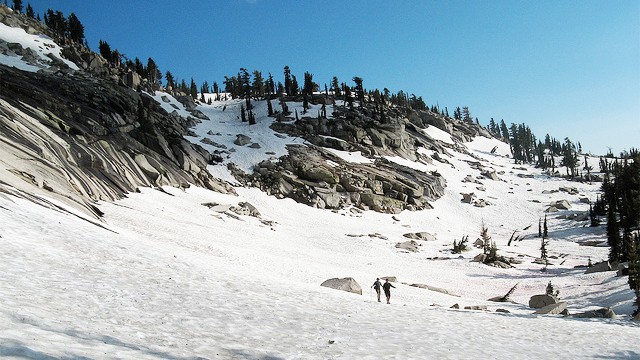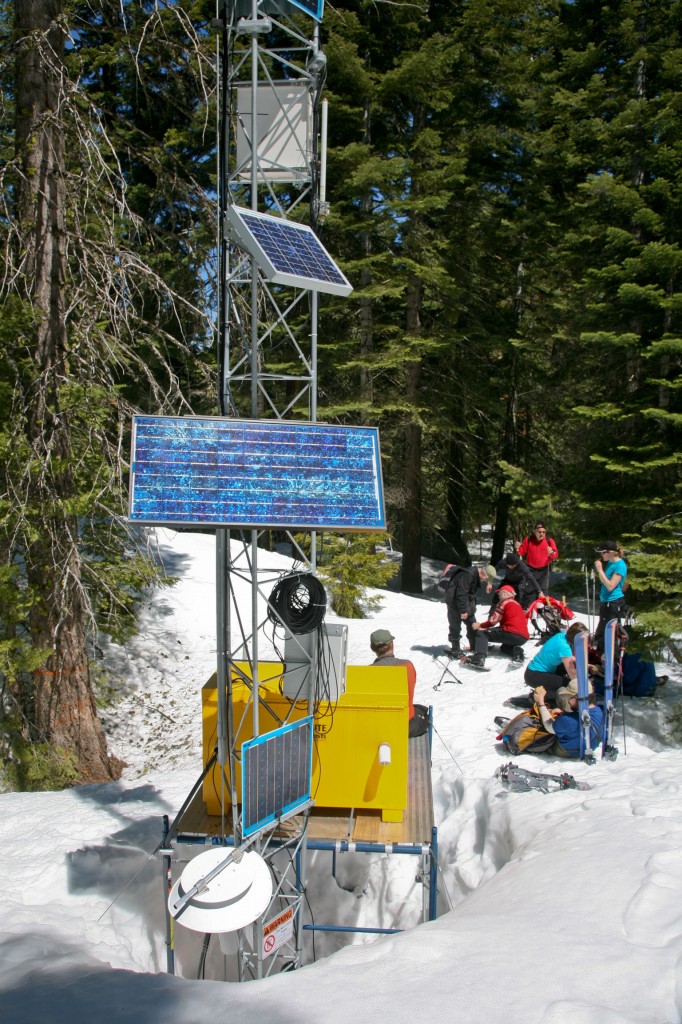
Update, 1:30 p.m. Tuesday (Dec. 30): Today, officials announced this winter’s first manual snow survey, which shows snowpack in the Sierra is 50 percent of what is average for this time of year.
December’s storms boosted water levels in state reservoirs, but unusually warm temperatures meant rain instead of snow for parts of the Sierra Nevada.
“We still have a long ways to go,” says Roger Bales, Director of U.C. Merced’s Sierra Nevada Research Institute.
“We need three to four more good storms in order for the snowpack to get up to average or above average levels.”

State water officials have estimated that California would need more than 150 percent of “normal” winter precipitation to substantially reverse the drought, now in its fourth year. Snow in the Sierra Nevada provides about a third of the water that the state relies on for drinking, business and agriculture.